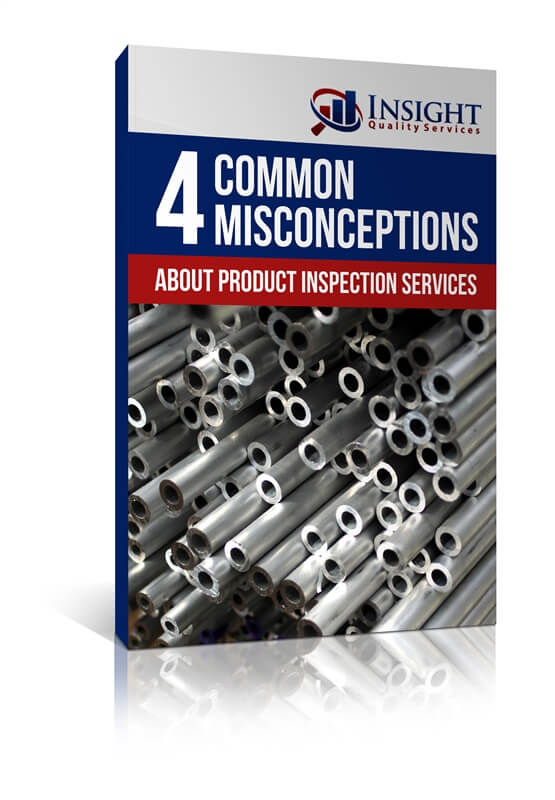Recently, we ran into a sticky situation with one of our customers.
They hired us for
They ended up accepting the shipment from their supplier and when they received it, they realized that it didn’t meet their expectations for quality. In fact, they considered most of the units they received to be unsuitable for sale.
After the fact, we realized we could have put more effort into educating them about the HOLD result, to help them avoid this problem.
That’s why we’re talking about it with you today.
You see, there are three results you can get in your inspection report… PASS, FAIL and HOLD. The PASS and FAIL results are fairly straightforward. But a HOLD result occupies a sort of grey area that can be difficult to understand.
When you conduct an inspection and your report comes back with a hold, there are 5 things you need to know.
#1 You Should Treat a HOLD Result Almost as if it Were a FAIL
When an inspector conducts the inspection, they are checking for all defects that you‘ve previously defined in your inspection checklist.
If too many have these defects, the inspection fails.
But…
What happens when they discover a problem that you haven’t previously defined and added to your quality inspection checklist?
If they make an observation that affects a significant number of units and they want to bring it to your attention, they may give you an inspection report with a HOLD result.
For example, let’s say you are making bags and 15% of them have what the inspector considers to be a noticeable cloth stitching issue.
It is important for you to review the issue because if you had listed it as a major or minor defect in your checklist, 15% would be enough to trigger a FAIL result.
#2 You Should Review the Photos in Your Inspection Report Carefully
When you receive a HOLD result, it is important that you do a very careful review of your inspection report.
At the end of the report, you will find numerous photos of your product.
These include general photos of the product from different angles, as well as their packaging and any inserts. They also include photos of testing being performed like weight tests, product function tests, and size tests
The inspector will make an effort to take these photos so that you have a clear view of anything you might be concerned about. That way, you can decide whether the issue is severe enough to justify not accepting the shipment
#3 It is Your Responsibility to Accept or Reject the Shipment
All these photos the inspector gives you are there for a reason.
When your inspection report shows a HOLD result, it is up to you to review them and decide if you are still willing to receive the product.
Essentially, the ball is now in your court to decide whether the inspection passes or fails. So, you need to keep in mind that if you accept the shipment and receive products that you aren’t happy with, there is no going back
#4 You Should Update Your Inspection Checklist for Future Inspections
HOLD results are generally triggered by things that are not on your inspection checklist.
That means that if the issues triggering the hold are significant to you and your brand, you should define them as major or minor defects that inspectors can check for in future inspections
#5 You Should Understand the Statistical Methods Behind Your Inspections
Inspections are conducted using a standard called AQL or Acceptable Quality Limits.
Before your inspection, you decide on the maximum percentage of defects you are willing to accept. A specific number of products are pulled and the inspector checks for three types of defects.
- Major Defects = Defects that are bad enough that you can’t sell the unit or it will get returned.
- Minor Defects = Defects that are slight deviations from specifications, but you can still sell the unit.
- Critical Defects = Defects that could potentially harm the consumer, such as a sharp edge.
In a standard inspection, the following limits are in place:
- Major Defects = 2.5% maximum
- Minor Defects = 4.0% maximum
- Critical Defects = 0% maximum
If you are running a standard inspection, it means you are only willing to accept 2.5% of units or fewer that cannot be sold and only 4% with slight deviations from ideal specifications.
So, if 5% of your units have a major defect, for example, the inspection will return a FAIL result
So, let’s say they bring a new issue to your attention, i.e. crooked sewing, that affects 15% of your products. You should consider the issue and decide whether:
- A) it makes your items unsellable
- B) it is a slight deviation from specifications, or
- C) it is acceptable.
If the answer is A or B, you should consider rejecting the shipment as if it was a FAIL (because 15% is more than the standard 2.5% for major and 4.0% for minor).
Also keep in mind that, because you have not defined the issue as a defect, the inspector will only look at it with their best guess as to what you think is acceptable.
Your brand standards may be more or less stringent than the inspector assumes. So, it’s important to slow down, take your time to clearly understand the issue, and see if you can get more photos or information from your factory to see what you can work out with them
Summary
The HOLD inspection result occupies a sort of grey area in between PASS and FAIL. So, it can be tricky to understand.
By default, when you receive a HOLD result, you should think of it as if it were a FAIL. Upon reviewing the reasons for the HOLD, you can decide if it actually should be a FAIL, or whether you are willing to accept the shipment. It is totally up to your discretion
Also Read: 4 Common Misconceptions About Product Inspection Services
Sometimes we get clients that think we can fix all their manufacturing problems. And it’s true we do a lot to identify and prevent – ensuring future problems are kept to a bare minimum. But, quality service providers do not insert quality into your product.
In this white paper, you’ll learn how inspection services really work and how to get the most out of your relationship with an inspection company.





0 Comments